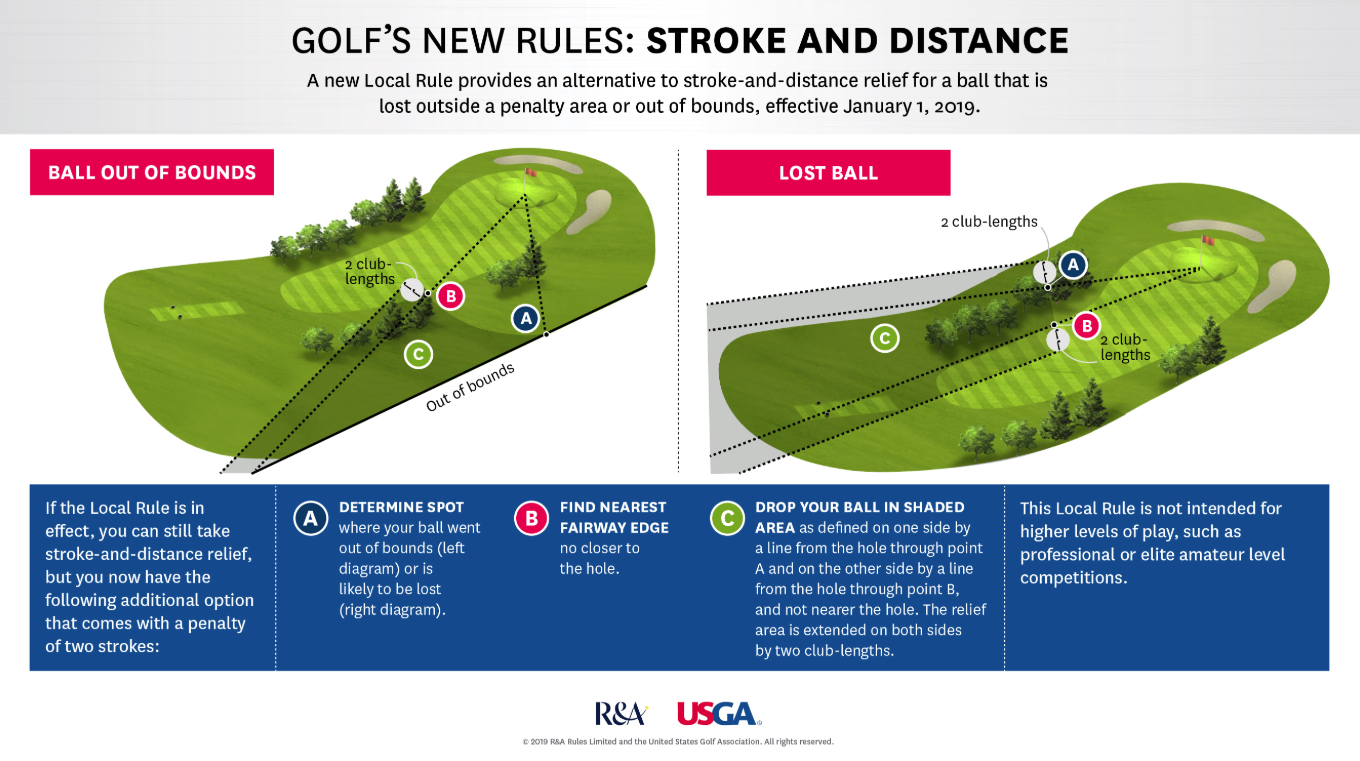Alternative to Stroke and Distance for Ball Lost or Out of Bounds
One of the most significant and talked-about changes in the new Rules of Golf for 2019 was the introduction of an alternative to stroke and distance for a ball that is lost or out of bounds. Before we go any further on this topic however, let’s first clarify that stroke and distance is still the default in the Rules of Golf! The alternative relief procedure is only available when the golf course or the Committee running a competition has decided to put the optional Local Rule into effect. Before using it, you should verify with the person in charge of the golf course (often the pro) or the competition as to whether or not it is in effect.
Now that you have verified that this Local Rule is in effect, let’s take a look at how it actually works.
How the Local Rule Works
The text of the Local Rule (along with helpful diagrams) can be found in the Committee Procedures section of the Official Guide to the Rules of Golf book. Within Committee Procedures, navigate to Section 8E and then locate Model Local Rule E-5. In addition to the book, all of the Official Guide content can be accessed for free in the USGA Rules of Golf mobile app (available in the iOS and Android app stores) or at www.usga.org/RulesOfGolf. There is also a resource page dedicated to this Local Rule which can be accessed at www.usga.org/StrokeAndDistance.
Now, let’s pretend that you just lost your tee shot, or hit it out of bounds. You can take relief under the Local Rule for two penalty strokes, which means that you will be playing your 4th shot after taking your drop. This might at first seem like a harsh penalty, but is actually comparable to what you could have achieved if you went back to play under stroke and distance. To take relief, your first steps are to identify your ball and fairway reference points.
- Ball Reference Point: For a lost ball, this is the estimated spot where your ball came to rest on the course. For a ball that went out of bounds, it is the estimated spot where it crossed the out of bounds line.
- Fairway Reference Point: The nearest spot on the fairway of the hole you are playing that is the same distance from the hole as the ball reference point, or farther (if there is no equidistant fairway reference point).
From the fairway reference point, you can then measure two club-lengths further into the fairway. Within this two club-length area on the edge of the fairway is where you will drop your ball most of the time. However, your relief area where you are allowed to drop is actually much larger. Imagine one straight line starting at the hole and running through the ball reference point, and then a second straight line starting at the hole and running through the fairway reference point. Your relief area includes anywhere between those two lines but no closer to the hole than the ball reference point, plus an additional two club-lengths to the side of each of those two lines. See the shaded areas in the diagrams below for a simple visualization of your relief area.


